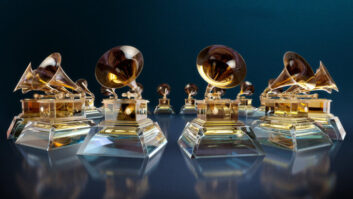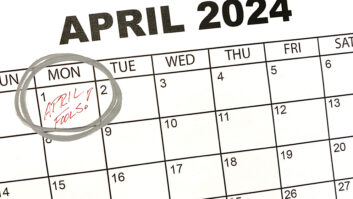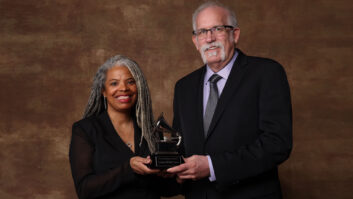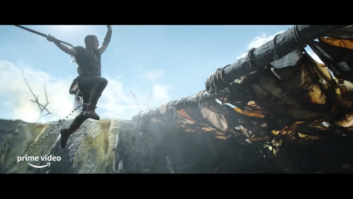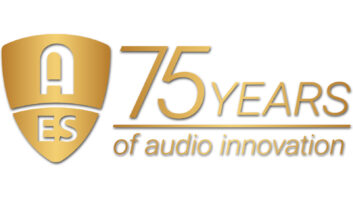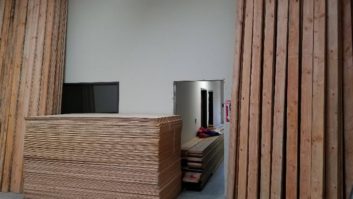
Dave Rat of Rat Sound
The complexities of festival production are definitely not for the faint of heart. Arranging a massive outdoor party for several thousand sun-toasted fans, with entertainment by multiple artists on multiple stages, calls for nothing less than a tightly choreographed tango between dozens of different providers, each with its own areas of expertise and its own agenda.

For sound and production companies, festivals can be something of a mixed blessing. It’s a high-profile, big money gig that can be rife with endless minute details and potential landmines. And as most pro sound providers will tell you, it’s easily as much work as a multi-week tour, all jam-packed into a single-intensive weekend.
“Festivals are great, but they’re definitely a challenge,” observes Dave Rat, president of Camarillo, CA-based Rat Sound Systems (Coachella, Stagecoach, Warped Tour). “Unlike a tour, they take a tremendous amount of preparation and a tremendous amount of de-preparation for a very short time.”
“You can’t be afraid of hard work, that’s for sure,” adds Paul Owen, vice president of Livonia, MI-based Thunder Audio (Lollapalooza, Bonnaroo, Orion, Detroit Electronic Music Festival). “You have to be aware going into it that festivals mean long hours and lots of work.”
YOU MAY ASK YOURSELF, HOW DID I GET HERE?”
For many of the larger sound companies in the US, their associations with particular festivals have deep roots. “We’ve been working with Goldenvoice (Coachella promoters) since the early 1980s,” said Rat. “We started out doing small clubs together, and we kind of grew up together. Our first year at Coachella, we did one stage, and it’s grown from there. This year we did six stages.”
“We bring a lot of years of experience to the table, and our relationships with these promoters go back a long way,” Owen said. “We had been working with Lollapalooza’s organizers for quite a while and had done some earlier festivals with them which were very successful.”
“We’ve got a number of festivals and local events that we’ve been involved with for years,” says Gregg Brunclik, president and CEO of Milwaukee, WI-based Clearwing Productions (Summerfest, Rock the Green, Irish Fest, Harley-Davidson Anniversaries), “but generally speaking, we command most of the festival business around here because we’re a well-equipped shop with great people behind the gear. Equipment attributes are important, but service and mature, level-headed people is what keeps the customer coming back.”
Jack Boessneck, executive vice president at Highland Heights, OH-based Eighth Day Sound (Bonnaroo, Hangout Festival, Ultra Music Festival, Electronic Zoo), agrees. “Relationships and reputation get you in the door, but your performance keeps you there,” he said. “We sell confidence. The promoters know and trust that they’re hiring professionals.”
Rat echoes the same sentiment. “First and foremost, it’s about the people. Good gear will get you the first jobs, but it’s the people who keep the jobs coming back. The most important thing I deliver in my business is confidence. When the band walks on stage and they see me in the room, they know that the sound is going to be as good as it can possibly be. They know we do what we say we’re going to do, and we do it to the very highest possible caliber.”
He adds, “Festivals are wonderful—and challenging—because there are so many different dynamics and personalities that interplay and intertwine. You’ve got a lot of people in a relatively confined space, all exposed to the elements for a long period of time. Tempers can flare, and people can potentially get adversarial. You have to have people who are professional enough to cope with working long hours and still maintain a cool composure.”
And that trust and professionalism is a two-way street, Rat said. “We put a lot of trust in the promoter too, just as they do in us. It’s easy for an inexperienced promoter to make one small error and not have a contingency plan for rain or some other issue, and the whole thing can turn into a disaster. It’s important to have confidence in the people you work with.”
IT’S ALL ABOUT THE GEAR…ISN’T IT?
Paul Owen of Thunder Audio
The question often asked is whether festival promoters select a particular sound company based on specific equipment. While no company wants to be pigeonholed as being a slave to a particular brand, it is once again a question of trust, with most sound providers sticking to road-tested industry standards with established track records. As Eighth Day Sound’s Boessneck puts it, “we try to offer familiar, user friendly gear that people are comfortable using.”

In mics and wireless systems, for example, the consensus is largely focused on Shure and Sennheiser for their tried and true product lines. “Wireless systems are almost always spec’d Shure UHF stuff,” says Clearwing’s Bryan Baumgardner.
“We get requests for both Shure and Sennheiser,” Rat adds. “The Sennheiser 300 series is probably the most requested in-ear monitor system. People have a familiarity factor with it. We’re also seeing a growing demand for the Shure’s 1000 series, especially where you’ve got a lot of video screens and the resulting RF interference. Both are great units, and it’s really just a matter of different tools for different jobs.”
For mixing consoles, the major, established brands also predominate. “We get a lot of call for the Avid Venue Profile, as well as the Yamaha PM5D and the Soundcraft Vi6 digital console,” says Thunder Audio’s Owen. For Baumgardner, “the Venue Profile is always on the rider.”
“We don’t have a loyalty to any one particular brand, as much as we provide according to demand,” said Rat. “The Venue is kind of an industry standard and a workhorse; most of the higher-end tours tend toward the Midas Pro 9 or Pro 6.” And as Boessneck points out, “the headliners tend to bring in their own consoles.”
Clearly, at least in the world of festivals, the format war is over and digital won. “It’s always digital,” says Boessneck. “We don’t even bring analog.” With multiple acts and scene changes, and the ability for FOH engineers to carry their own particular setup on a USB stick, it makes perfect sense.
“Some of the old-school guys want analog, but it’s kind of a luxury for most acts. For the most part, it’s digital,” observes Rat, adding that cost has also become less of a factor. “At one time, there was a big difference in price, but the cost of digital rentals has come down as the cost of analog has risen. The need for outboard gear drives up the price of analog, and the reduced shipping cost lowers the price of digital. So eventually they’ve started to meet somewhere in the middle.”
PA systems tend to be more of a variable, with different companies committing to different manufacturers’ ecosystems. Eighth Day Sound sticks with d&b audiotechnik, while Thunder Audio mixes it up between Meyer Sound’s Milo, JBL’s VTX, and the RCF TT arrays. Clearwing’s Baumgardner points to “L-Acoustics on almost every rider I see, followed by VerTec.”
“Some of our equipment is demand-based purchases—consoles are usually based on demand, for example—and then there are predictive purchases,” Rat said. “With a large format array, if everybody’s asking for it and you don’t have it already, you’re behind the curve. When we bought our first V-Dosc system in 1996, there was virtually no demand for it yet. When the L-Acoustics K1 array came out, we bought the first full system and put it out at Coachella. Again, no one had heard it yet, and there was no demand for it. It takes almost a year for awareness to spread and demand to build. We just debuted the new EAW Anya rig at Coachella this year. Nobody knows they want it yet, but we are trusting in our professional experience.”
PLAN AHEAD, KEEP A COOL HEAD
As with most large and complex endeavors, the secret to success is planning. Not surprisingly, preparation for a major festival like Lollapalooza or Bonnaroo begins long before the trucks pull away from the sound company’s loading dock. “On average, we’ll begin our initial planning two to three months in advance for the larger major festivals,” said Owen. “Much depends on how quickly we can match the requested equipment with the promoter. Even then, you’re typically still working and reworking the lists even as late as a week or two before the show. Sometimes a band or an artist will request some last-minute changes and we’ll have to fine tune things accordingly.”
“We do a lot of advance planning,” he continues. “You’re inevitably going to be confronted with your share of last-minute surprises, and the more you can set up contingency plans and such, the better prepared you are to adjust and adapt to changes.”
Not surprisingly, smaller metropolitan festivals are considerably less time-intensive. “Most of our festivals are locally based here in Milwaukee,” says Baumgardner. “For a typical weekend festival, we’ll normally prep in our warehouse for two to three days, and then de-prep for a day.”
ONE SIZE DOES NOT FIT ALL
Jack Boessneck of Eighth Day Sound, working on a DiGiCo SD5 console
Festivals come in all shapes and sizes, and what works for the multiple stages in the relatively remote desert spread of Coachella may not be as effective in the urban downtown confines of Chicago’s Lollapalooza Festival. Proximity to neighbors is always a consideration in more populated areas, typically calling for a smaller main PA with one or more delays.

“Certainly, some festivals are better served using multiple delays—the requirements are going to be different if you’re in the middle of a city, or the middle of nowhere,” Boessneck said. “Particularly in a dense, urban downtown, it’s just as important to look at the area you don’t want to cover as it is to look at the area you do.”
“Local ordinances are always a consideration, and so is coverage,” agrees Owen. “Sometimes the promoter’s original placement has things firing into residential areas, for example; in that case, we do whatever we can to change that. Other times, location and logistics will impact the way we work more than the actual selection of equipment. We did a festival in downtown Detroit, and the restrictions there prevented us from doing a soundcheck in the afternoon because it would have disturbed the people working in the office buildings across the way. So we had to wait until after 4 p.m. on Friday to get started.”
Planning out coverage patterns and array angles ahead of time is a well-used tactic. “We draw out the venue in (L-Acoustics) Soundvision to determine arrays to optimize coverage of the area,” says Baumgardner. “This also helps us to aim the PA away from buildings, and away from obstructions that might affect the sound.” As Baumgardner also observes, program material can play a role as well. “Once we have determined the size and configuration of the PA and how it will be deployed, we then take into account the type of music. For festivals that are heavy on electronic dance music, for example, we will typically increase the number of subwoofers to provide the extra low-frequency energy required for that kind of show.”
Many of today’s larger festivals have grown to the point where multiple stages running simultaneously is the norm. The most recent Coachella festival boasted six stages, and as Dave Rat points out, this creates issues beyond the obvious ones. “Sure, you have to do what you can to minimize the sound bleed from one stage to another, but you also have to consider variations in coverage for each stage. The crowd will all come over to one stage for a certain act, and you have to make sure to cover the whole crowd, even though it has expanded threefold. And then that crowd will move to a different stage, and you’ll need to expand your coverage there and reduce it on the other stage. You have to have a certain dynamic control to achieve that, as well as great communication.”
Rat points to steerable arrays as offering some advantages. “The steerable technology allows you to direct and reconfigure multiple smaller sound sources, and to save and recall different scenes,” he explains. “But there are challenges with that technology as well, in terms of striking a balance between steerable and delay clusters, and getting everything to sync right for different locations in the audience. And environmental factors also have an impact—wind and humidity will be more of an issue with a single large sound source than with multiple smaller delay rigs, where you can localize your sound a lot easier. On the other hand, multiple systems call for thousands of feet of cable trenching, not to mention power, communication, and the added challenges of making sure everything sounds good from multiple sources.”
BE CAREFUL OUT THERE
Greg Brunclik of Clearwing Productions
In recent months, our industry has seen an increase in reports of stage and truss collapses, including a number of high-profile incidents resulting in injuries and even deaths. For most veteran sound providers, safety has long been de rigueur, but these types of incidents drive home the importance of planning and preparation. As Thunder Audio’s Owen observes, cooperation and coordination between all the show’s different providers is key.

“We get together with all the vendors in lighting, sound, video, staging, and so forth, and make sure everyone has a plan in place to cover a wide range of contingencies,” he says. “We get them to send us a drawing of the stage, and we’ll get with the lighting company, for example, and discuss where we would like to have the lights placed, and they’ll tell us whether it’s feasible and how much weight we can load where, and so forth.”
Owen offers a case in point: “In the days leading up to one particular festival, we were anticipating three days of harsh weather,” he recounts. “Live Nation put a plan in place that categorized different courses of action depending on what the wind was doing, as protection for the structure, the equipment, and of course, the patrons. So for example, if the winds reached a certain speed we would lower the video walls. At a higher speed, we would lower the soft goods and PA system; higher than that and we would begin to evacuate the area. We always have a plan like that in place, and last year at Lollapalooza, when we had a really strong wind storm come through, they were able to evacuate the stage and site in record time, and no one got hurt.”
The same goes for Coachella, says Rat. “We try to be not just aware of safety issues, but proactive about it. If we are concerned about something we don’t just assume that someone else is taking care of it. Coachella is located in the San Gorgonio Pass, one of California’s natural wind tunnels, and wind is a big issue for us. We have very tight guidelines about the maximum wind speed before we will drop the PA, before we will pause the show, cancel the show, evacuate the area, and so forth.”
Rat offers an interesting perspective on the recent spate of stage collapses. “The trussing is used to support mainly PAR cans. Now it has to support these massive video screens on there as well. They weigh many tons more than they used to, and they are adding more stress to the roofs. It’s a factor that needs to be included in the planning, and provisions made for that extra weight.”
THE FUTURE’S SO BRIGHT
Despite the fact that many well-known festivals have been running for years, the consensus among most of the major sound providers is that the festival industry in the United States is still in its relative infancy. “I think the market in the U.S. has really just started to take off,” said Owen. “In Europe, you’ve got a very short season, only about three to five months, and they’ve really figured out how to make the most of it, for the fans, the artists and the promoters. Here, we’ve got a much larger geographic area, and we’ve also got a climate advantage. The festival market can actually run all year here in the US. We’ve only just begun to tap into that potential.”
“It’s amazing how the festival industry in the US has grown,” says Rat. “When Coachella first started, large scale recurring festivals were pretty much non-existent in America. Europe has had them as a mainstay for decades. Numerous countries have at least one or more signature festivals. And there was always this perception that the European festival paradigm, the way people travelled and camped and got along, would not work in the US. And I think that’s been proven wrong. And now there are festivals everywhere, with new ones every year. The season is much longer and they will continue to expand. We haven’t even come close to critical mass yet. Festivals are growing and expanding and we’ve still got a ways to go.”
“I think festivals are still a growing market in the US,” agrees Clearwing’s Gregg Brunclik. “Festivals like Coachella, Bonnaroo, and the Electric Daisy Carnival all seem to be thriving. I see the trend continuing. Summerfest, Irishfest, and the Harley-Davidson festivals may not be as well known, but are some of the biggest in the nation, and we’re all eager to do more.”
“Festivals will continue to become a greater avenue for bands and acts to reach a larger fan base,” Boessneck said. “For the customer, festivals represent a tremendous bang for their buck. Buy a ticket for a two- or three-day festival and you can see a phenomenal line-up of performances. You’ll see up-and-coming artists, well-known artists, and a handful of artists who could draw that many people all on their own. And especially at many of the larger festivals, you can get to see a wide range of different genres all for the price of one ticket. For a music fan, that’s cool. Festivals are absolutely here to stay.”
